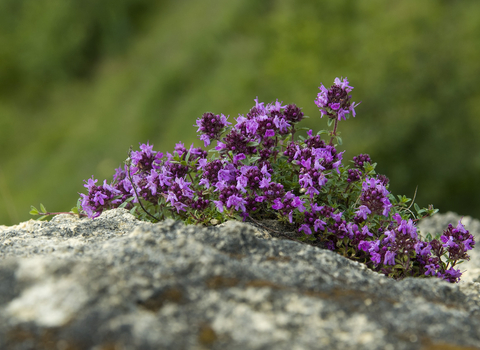
Wild thyme ©John Bridges
Wild thyme
The delightful fragrance of wild thyme can punctuate a summer walk over a chalk grassland. It forms low-growing mats with dense clusters of purple-pink flowers.
Scientific name
Thymus polytrichusWhen to see
June to SeptemberSpecies information
About
Wild thyme is by far the most widespread and abundant of the thyme species. Walk across a chalk grassland in summer and its fragrance will punctuate the warm air around you - a delightful, sensory experience. Often forming mats low to the ground, it can also be found growing in short-turfed pastures and meadows, and on cliffs, walls and rocky places. A perennial plant, it flowers from June to September.How to identify
An aromatic, creeping plant, wild thyme has oval leaves that appear in pairs along its stems, and densely packed heads of pinky-purple flowers.Distribution
Widespread in South East England, scattered distribution elsewhere.Did you know?
The thyme used in cooking is usually the Mediterranean herb, Thymus vulgaris. Occasionally, this species can be found growing on old walls and banks having been thrown-out with garden rubbish. Wild Thyme, however, also has its uses: from scenting clothes to making tea, it's had a long association with humans.The Wildlife Trusts manage many grassland habitats sympathetically for the benefit of all kinds of wildlife. Careful grazing with traditional breeds, hay-cutting at the right time and scrub clearance are just some of the ways grasslands are kept in good condition.
